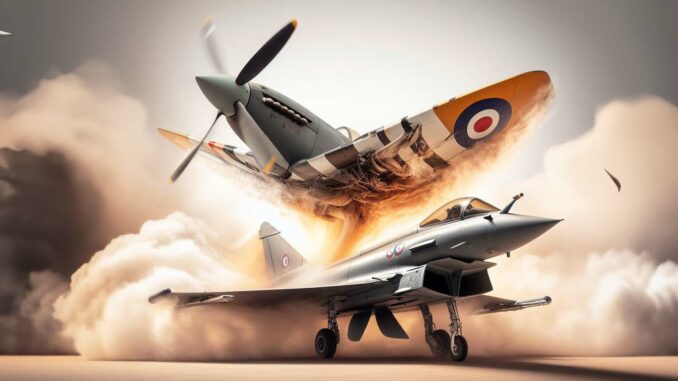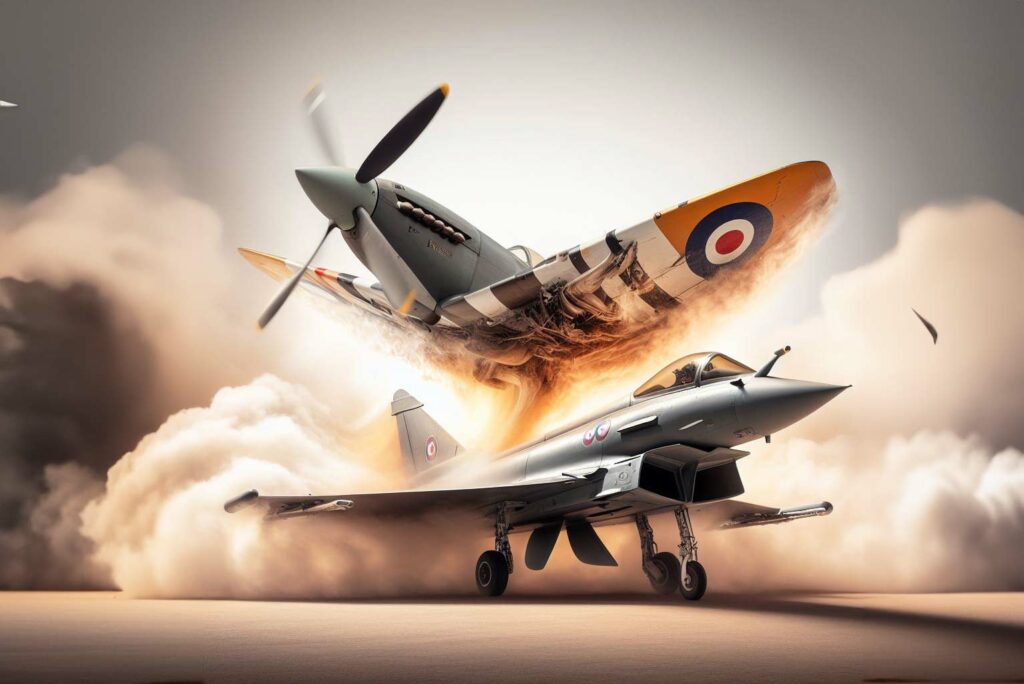
The history of military aviation is a fascinating chronicle of innovation and evolution, marked by significant technological advances. Since the 1950s, fighter aircraft design has undergone radical transformations, directly influencing their performance and capabilities. This article explores these developments, highlighting specific examples of fighter aircraft from each era.
The 1950s-1960s: The Era of Jets and Speed
The early 1950s saw the advent of jet aircraft, gradually replacing the propeller-driven planes of the Second World War. This period was characterized by a race for speed and altitude, as exemplified by aircraft such as the American F-86 Sabre and the Soviet MiG-15. These aircraft introduced swept wings and much more powerful jet engines.
Key advances:
Swept wings: To reach supersonic speeds, swept wings reduced air resistance.
Jet engines: More powerful and efficient, they enabled never-before-seen speeds and altitudes to be reached.
The 1970s: The Age of Maneuverability and Agility
In the 1970s, the emphasis shifted to maneuverability and agility, responding to the need for dogfights. The F-4 Phantom II is a typical example of this period, with a design focused on versatility and the ability to conduct air-to-air and air-to-ground combat.
Key advances:
Multi-role design: Aircraft could perform different missions, increasing their usefulness.
Enhanced maneuverability: More sophisticated aerodynamic designs improved combat agility.

The 1980s-1990s: The Era of Advanced Technology
This period was marked by the massive integration of advanced technologies. The F-16 Fighting Falcon and MiG-29 are examples of aircraft incorporating sophisticated electronics and computerized flight control systems.
Key advances:
Fly-by-wire: fly-by-wire flight control systems for improved responsiveness and stability.
Advanced avionics: Improved radar, communication and navigation systems.
2000s to Today: The Era of Stealth and Integrated Systems
Modern fighter aircraft, such as the F-22 Raptor and F-35 Lightning II, emphasize stealth and systems integration. Their design aims to minimize the radar signature, while integrating advanced technologies for communication, targeting and electronic warfare.
Key advances:
- Stealth: Design and materials to reduce radar visibility.
- Integrated systems: Data fusion for improved situational awareness. Performance implications
Every advance in fighter aircraft design has had a direct impact on performance:
- Speed and Altitude: 1950s jets brought unprecedented speeds, paving the way for high-altitude strategic missions.
- Versatility: 1970s aircraft, capable of multiple missions, increased operational efficiency.
- Accuracy and responsiveness: The introduction of advanced avionics and fly-by-wire greatly improved accuracy and responsiveness.
- Survivability: Stealth and modern integrated systems have increased aircraft survivability in hostile environments.
The evolution of fighter aircraft design since the 1950s illustrates a remarkable journey of innovation and adaptation. From the quest for speed and altitude to the era of stealth and integrated systems, each step has been dictated by the changing needs of aerial warfare. Aircraft like the F-86, F-4, F-16, MiG-29, F-22 and F-35 are not just examples of this evolution; they are testaments to human ingenuity in the face of the challenges of their time.
As we look to the future, we can be sure that fighter aircraft design will continue to evolve, driven by ever-changing technological advances and military strategies.
War Wings Daily is an independant magazine.